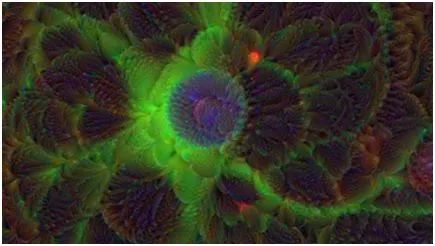Ways to trigger changes in biomedical research
Photomicrographs of fluorescently labeled cells are undoubtedly beautiful, but they require invasive, sometimes destructive or lethal experimental procedures to fluoresce them.
In a new study, to avoid this interference, researchers from the University of California, San Francisco and Google have developed a computer program that can distinguish different cell types and identify subcellular structures - -- All this does not require the fluorescence probes our eyes rely on for visual observation. The relevant research results were published online in the Cell journal on April 12, 2018. The paper titled "In Silico Labeling: Predicting Fluorescent Labels in Unlabeled Images".

This image shows the neural network program "thinking" which cell structures it can identify
Margaret Sutherland, director of the National Institute of Neurological and Stroke Studies in the United States (not participating in the study), said in a statement, "This method has the potential to trigger changes in biomedical research."
These researchers used a method called deep learning to design a neural network, a computer program that simulates the brain. It uses data to identify patterns, form rules, and apply these rules to new ones. Information.
Google’s Accelerated Science software engineer said in a press release, “We have shown two sets of matching images of the same cell to this neural network (a set of fluorescently labeled cells, and One group trains for a picture of unlabeled cells. We repeated this process millions of times. Later, when we gave it to the neural network it had not observed the unfluorescently labeled cells before. It accurately predicts where the fluorescent label is."
By providing a high-quality picture of the cell, this computer program can almost perfectly identify the nuclei within the cell. It is also able to distinguish between dead and living cells and finds neurons in cell populations that include both astrocytes and immature dividing cells, and can even distinguish between dendrites and axons.
The researchers stated that future research will focus on optimizing this neural network and improving it on certain tasks—such as selecting neuronal subtypes and discovering axons in high-density cell cultures. Not very robust performance.
2.5 USB3.0 HDD Enclosure
Hdd Enclosure,Hdd Enclosure Usb Hard Disk Case,Hard Drive Disk Cas,External Hard Drive Enclosure
Shenzhen GuanChen Electronics Co., Ltd. , https://www.gcneotech.com